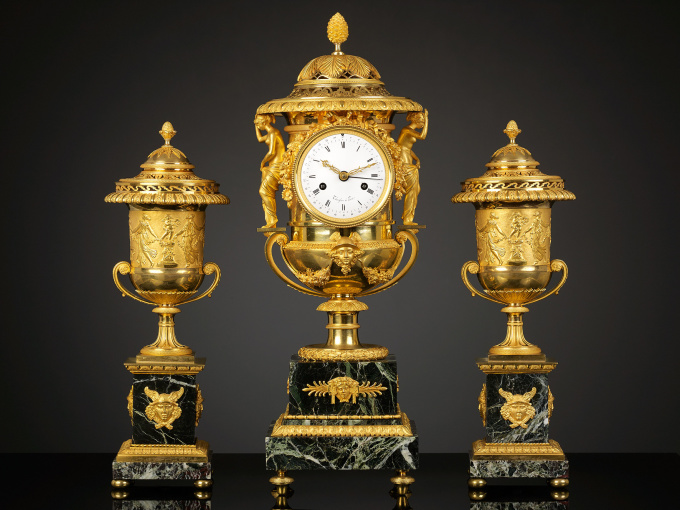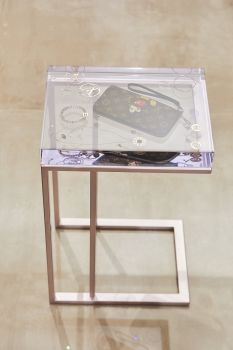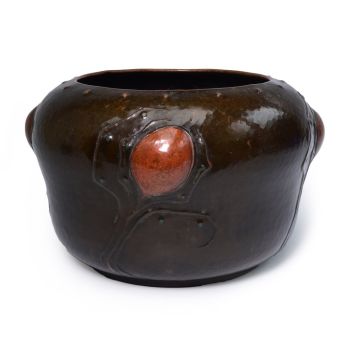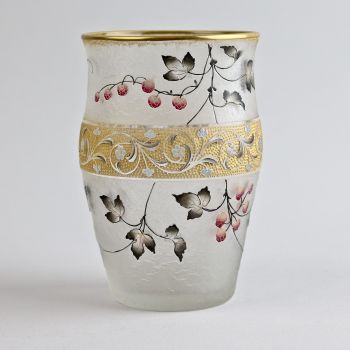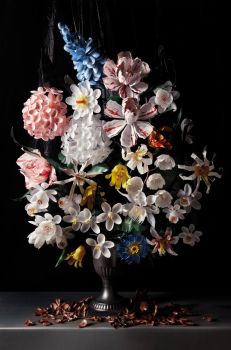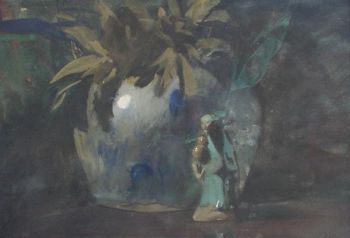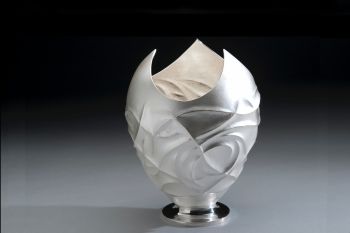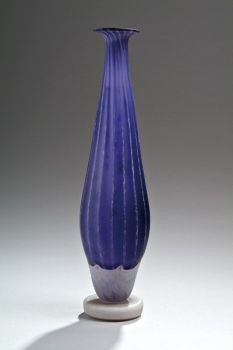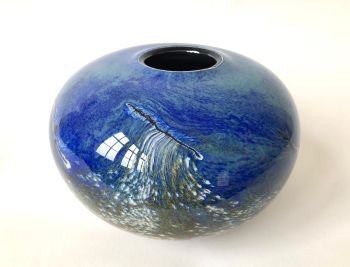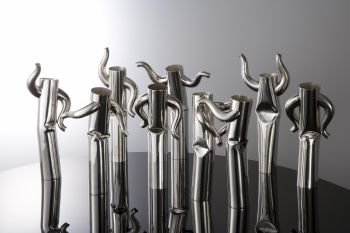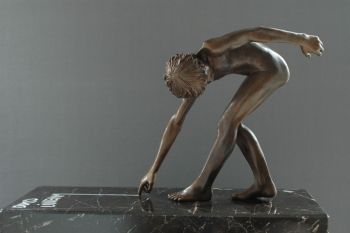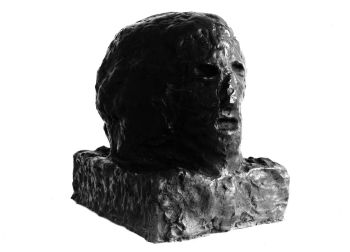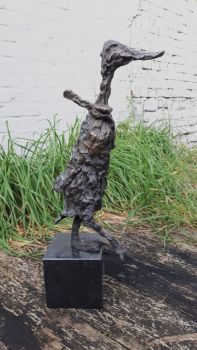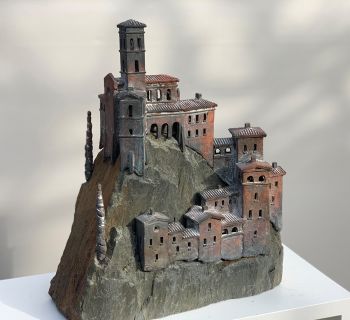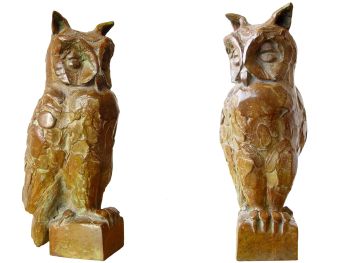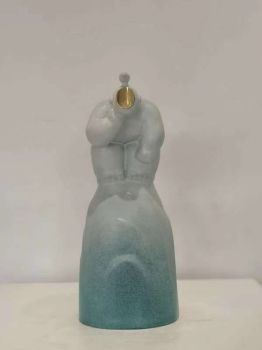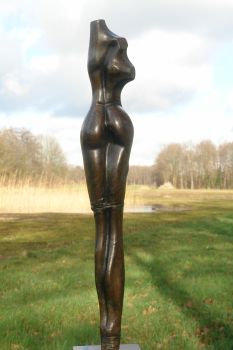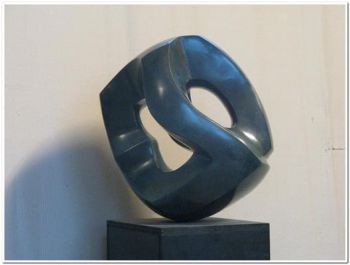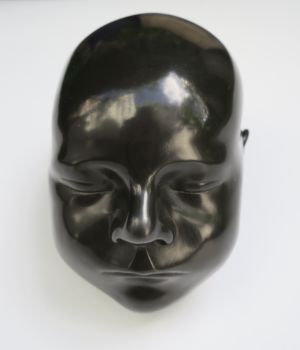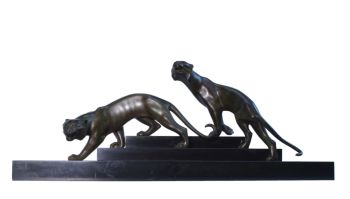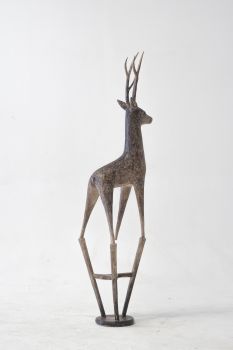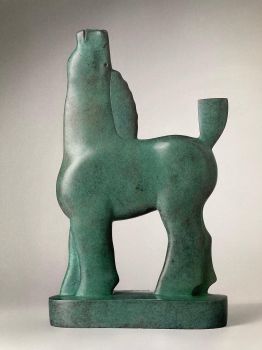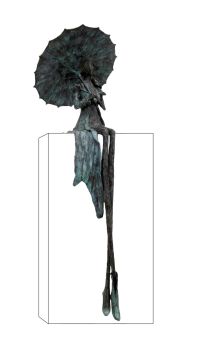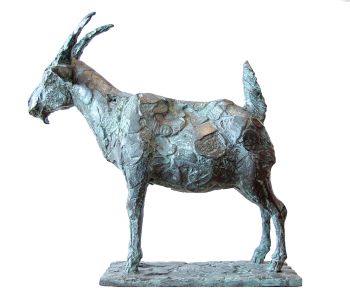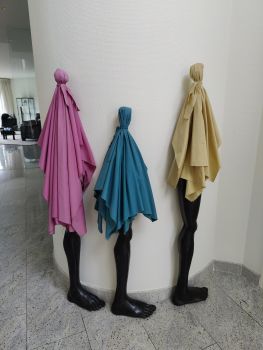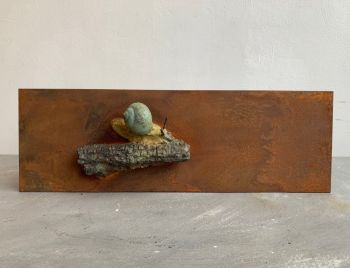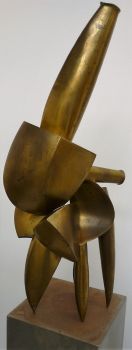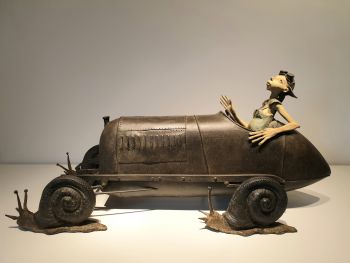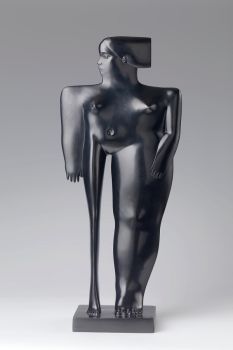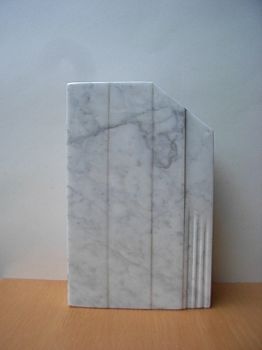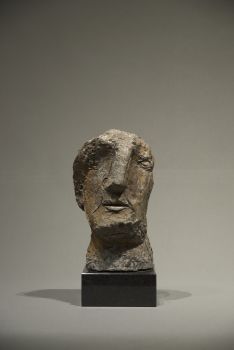An Empire Suite of an Urn-shaped Mantel Clock and Two Vases 1810
Pierre-Philippe Thomire
MármolPiedraBronceMetal
60 ⨯ 21 ⨯ 21 cm
Actualmente no disponible a través de Gallerease
- Sobre la obra de arteAn exceptionally large and beautiful set of two ornamental vases and a mantel clock, after a model by Thomire, and with a Clockwork by Thonissen.
Clockwork
8-day going train, striking train and central date indication. The white enameled dial shows Roman numerals for the hours and stripes for the minutes. The outer ring indicates the date (1-30) in Arabic numerals.
Signed on the dial: Thonissen à Paris
Thonissen worked from the Rue Mandar from 1806 to 1840.
The mantel clock is shaped like a “de Medici” vase and is flanked by two female figurines “à l ‘antique” who support the lid with their right hand. The, partly openwork, lid is decorated with stylized palmettes and a pine-cone finial. The outside of the dial is decorated with a beaded edge and a garland pending from the top. Underneath the dial the vase has a male portrait with a winged helmet, presumably Mercury or Hermes, flanked by floral garlands. The clock is resting on a double marble plinth with four bun-shaped legs. The pedestal is decorated with portraits flanked by stylized palmettes and an architrave with leaf motifs.
The ornamental vases have the same shape as the mantel clock, but are much simpler in their ornamentation. The body is decorated with a relief of dancing priestesses and putti. A comparable set can be found in the Duesberg Museum in Mons, Belgium.
Pierre-Philippe Thomire (1751-1843) was one of the most famous bronze casters and ciseleurs during the French Empire era. Although trained as a sculptor, Thomire chose to follow in his father’s footsteps, and take up the more lucrative profession of ‘fondeur’. He became the leading bronze artist of the late 18th and early 19th century. Thomire was trained by Gouthière and afterwards founded his own company that manufactured ornamental bronzes for furniture. Later, Thomire became assistant to Duplessis, the director of the Manufacture de Sèvres. After the death of Duplessis in 1783, Thomire turned once again to bronze casting and manufactured bronze fittings for porcelain artefacts. In 1809 Thomire was awarded the title “Ciseleur de l’Empereur”. - Sobre el artistaPierre-Philippe Thomire nació en 1751 y se convirtió en uno de los tiradores de bronce y ciseleurs más famosos durante la era del Imperio Francés. Aunque había recibido formación como escultor, Thomire decidió seguir los pasos de su padre y dedicarse a una profesión más lucrativa de "Fondeur" o taumaturgo. Se convirtió en el principal artista de bronce de finales del siglo XVIII y principios del XIX. Thomire fue formado por Gouthière, pero pronto estableció su propio taller para la fabricación de bronces ornamentales para muebles. Más tarde, Thomire se convirtió en asistente de Duplessis, director de la Manufacture de Sèvres. Después de la muerte de Duplessis en 1783, Thomire se involucró una vez más con las fundiciones de bronce, ahora fabricando accesorios de bronce para artefactos de porcelana. En 1809 recibió el título de "Ciseleur de l’Empereur". Sabemos que su firma es: THONISSEN A PARIS. Falleció en 1843.
Artwork details
Categoría
Tema
Estilo
Material y Técnica
Colour
Related artworks
Artista Desconocido
Set of eight gouache drawings1799 - 1801
Precio a consultarRobert Schreuder Antiquair
Artista Desconocido
Pulseira de diamante do século 18 com entalhes de 2.000 anos1790
€ 23.000Adin Fine Antique Jewellery
 curada por
curada porDanny Bree
Artista Desconocido
Set Franse Empire Pendules / Empire Lectura penduleearly 19th
Precio a consultarKuipers Kunst & Antiek
1 - 4 / 15Artista Desconocido
UN NETSUKE DE MARFIL DE UN HOLANDÉS CON UNA COCKEREL18th century
Precio a consultarZebregs & Röell - Fine Art - Antiques
Artista Desconocido
UN PEQUEÑO NETSUKE DE MARFIL DE UN HOLANDÉS CON UN TAMBOR1750 - 1800
Precio a consultarZebregs & Röell - Fine Art - Antiques
1 - 4 / 24Jan Voerman sr
Still Life with flowers in a Chinese figurine1850 - 1900
Precio a consultarKunsthandel Pygmalion
1 - 4 / 24- 1 - 4 / 24

